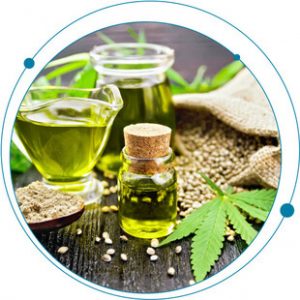
I did some digging on Google and decided to help answer the top 3 most searched queries about cannabis testing methods and technology, for both marijuana and hemp.
1. What equipment should I use to test my cannabis and hemp samples for mycotoxins, pesticides and potency?
If you understand the merits of high-pressure liquid chromatography with tandem mass spectrometry (LC-MS/MS) as a sensitive and selective analytical technique, you have your answer already. As a marijuana and hemp testing technology, it’s excellent. It is well suited for analyzing a natural product that contains hundreds of chemical entities across a very wide range of concentrations. These entities include endogenous compounds such as cannabinoids, terpenes and flavonoids and exogenous ones such as mycotoxins, pesticides and herbicides.
Testing marijuana and hemp for contaminants and potency isn’t the most straightforward task, but it is critical, nonetheless. Common equipment choices include high-pressure liquid chromatography (HPLC), gas chromatography and mass spectrometry instrumentation.
A suitable method should be efficient and capable, allowing you to isolate and identify a wide range of compounds down to low concentrations (parts per million or parts per billion range) within a single analytical run. So, the instrument you choose should have selectivity and specificity for the separations, and high sensitivity to identify and quantify your analytes.
Considering these things, HPLC is a useful instrument that enables you to analyze as many compounds as possible while limiting the risk of decarboxylation. By combining it with mass spectrometry, you can accurately detect and quantify the fragmentation of each molecule. With LC-MS/MS, you can achieve the high selectivity, sensitivity, and specificity you need for a simultaneous analysis within a single run.
If you’re interested in hearing more about my thoughts on the top cannabis testing techniques for marijuana and hemp, read this blog.

2. I’m run a lab in the U.S. What does the 2018 Farm Bill mean for my hemp testing? What should I be testing?
Here’s a little background to put things in context. Last December, the United States Congress passed the Agriculture Improvement Act of 2018 (a.k.a. the Farm Bill).1 This bill expands hemp cultivation beyond pilot programs that study hemp (often labeled “industrial hemp”). It legalizes hemp as an agricultural commodity, removing it from the controlled substances list. That’s big news for the thriving industry, because it means no restrictions on the sale, transport, or possession of hemp-derived products if the items are produced in a manner consistent with the law. But that’s not all.
Here are some restrictions you should note:
- Delta 9 (∆9) tetrahydrocannabinol (THC) limit
Like in the 2014 bill2, section 10113 of the 2018 Farm Bill specifies that hemp cannot exceed 0.3% tetrahydrocannabinol (THC). Any cannabis plant exceeding that limit would be considered marijuana and will be subject to federal penalties. - Shared state and federal roles in regulating hemp cultivation and production
States can only license and regulate hemp upon receiving approval from the United States Department of Agriculture (USDA). Hemp cultivators in states that have opted out of developing state programs can also apply for licenses and comply with a federally-run program. That being said, the Farm Bill will not impact state-level medicinal cannabis programs. Cannabis products produced by or for state-level therapeutic cannabis programs remain illegal at the federal level.
So, what does this all mean for cannabis labs testing marijuana and hemp? Depending on the state, analytical testing will need to ensure that crops are within the THC limits. This is where an accurate hemp testing protocol is absolutely vital and can mean the difference between a lawful, profitable harvest and a total loss. Check out our cannabis testing resources for marijuana and hemp here.
3. Can HPLC-UV be used for terpene profiling in cannabis?
Yes, but there’s a catch!
At least 200 terpenes have been identified in cannabis. Unique strains present different terpene profiles, which contribute to distinct flavor and aroma. One of the most straightforward approaches to terpene analysis uses LC separation with UV detection in the 200–230 nm wavelength range. Unfortunately, linear dynamic range limitations make it difficult to accurately quantify a wide range of terpenes in a single injection, using a single dilution scheme for all samples. The concentrations of highly abundant terpenes may exceed 90%, whereas others might only be present at concentrations less than 0.5%.
LC separation with MS/MS detection is another commonly used technique for cannabis terpene analysis. It is capable of a larger dynamic range and more specific detection, with the ability to measure compounds in the fg/mL and pg/mL ranges. This presents a similar but contrasting problem where high concentration terpenes require extensive dilutions that can lead to inaccurate results.
By simultaneously utilizing both UV and MS detectors, higher and lower abundant terpenes can be accurately detected and quantified in a single analysis with the same sample injection and dilution factor. This two-detector approach covers a wide quantitative range of terpenes, at 0.05–100% by product weight, and increases lab sample throughput.
Download the marijuana and hemp testing info kit to access technical notes our team has put together on mycotoxins, pesticides, terpene profiling and potency analysis.
We hope this answers your top questions on cannabis testing technologies for marijuana and hemp. Post a comment if you have more questions. I’m happy to help!
References
- H.R.2 – Agriculture Improvement Act of 2018, 115th Congress (2017-2018)
- H.R.2642 – Agricultural Act of 2014, 113th Congress (2013-2014)






 Contact Support
Contact Support
0 Comments